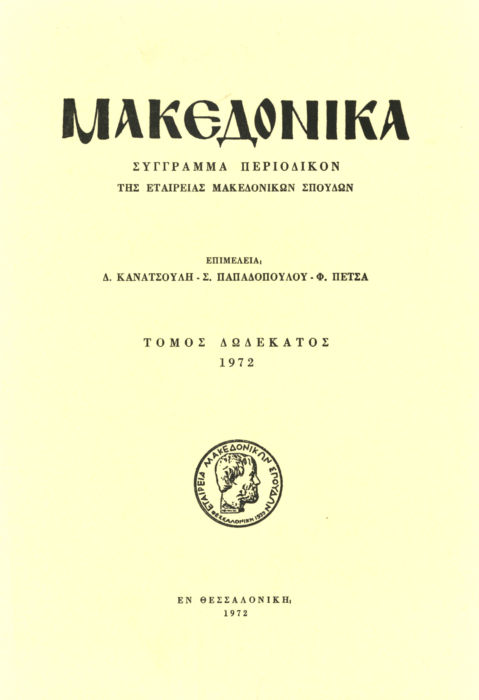Les cloches de Salonique
Abstract
L’art de la cloche est très ancien et continuera à exister tant que le christianisme existe, car les cloches sont souvent renouvelées à cause de leur destruction.
À Salonique il y a un atelier réservé à la fabrication des cloches.
Les différentes étapes de la fabrication d’une cloche sont les suivantes: Construction, cuisson, formation, déformation, fonte et élaboration finale. Tous ces travaux sont réalisés avec un grand soin et beaucoup d’attention et une habileté très particulière, car la moindre distraction peut être fatale à la cloche. Le travail le plus délicat c’est la formation, où la fausse cloche est travaillée comme une sculpture et où sont gravées les décorations. Mais le travail le plus dur et le plus important c’est la fonte, c’est à dire la bonne fonte du métal et le moment le plus difficile quand le métal en fusion est versé dans le moule. La condition indispensable c’est la proportion exacte des métaux dans le bronze, c’est à dire 80% de cuivre et 20% d’étain. Tout cela et beaucoup d’autres détails font du travail de la cloche une cérémonie et les fabricants de la cloche ressemblent à des initiés.
Article Details
- How to Cite
-
Μηλιατζίδου-Ιωάννου Ε. (1972). Les cloches de Salonique. Makedonika, 12, 234–263. https://doi.org/10.12681/makedonika.1007
- Section
- Articles

This work is licensed under a Creative Commons Attribution-NonCommercial-ShareAlike 4.0 International License.
Authors who publish with this journal agree to the following terms:
- Authors retain copyright and grant the journal right of first publication with the work simultaneously licensed under a Creative Commons Attribution Non-Commercial License that allows others to share the work with an acknowledgement of the work's authorship and initial publication in this journal.
- Authors are able to enter into separate, additional contractual arrangements for the non-exclusive distribution of the journal's published version of the work (e.g. post it to an institutional repository or publish it in a book), with an acknowledgement of its initial publication in this journal.
- Authors are permitted and encouraged to post their work online (preferably in institutional repositories or on their website) prior to and during the submission process, as it can lead to productive exchanges, as well as earlier and greater citation of published work (See The Effect of Open Access).



